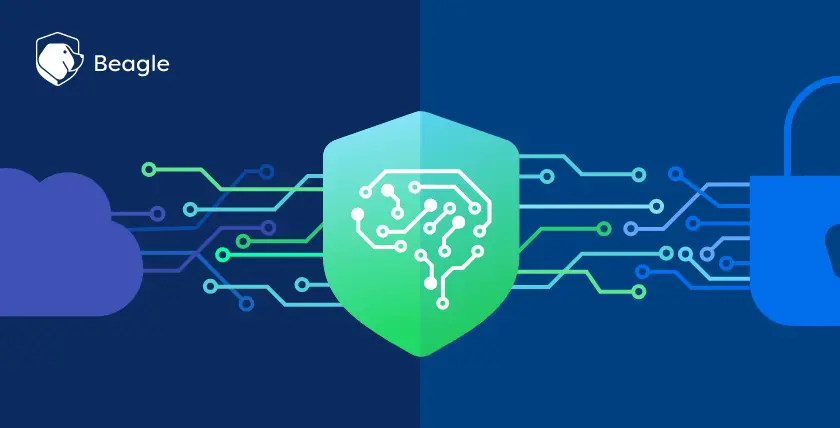
Artificial Intelligence (AI) is widely considered to be a powerful technology that it is serving as the basis for future innovations in many mainstream applications. In this new era of technology companies, innovators are working tirelessly to integrate AI, Machine Learning (ML) and Deep Learning (DL) to make software better.
AI is an umbrella discipline that covers everything related to making machines smarter. But in the era of rising cybercrime, AI can be a double-edged sword that can be used by cyber security researchers and cybercriminals alike.
AI and ML are proving to be powerful tools in transforming cyber security, with security tools analyzing data from millions of cyber security incidents, and using it to identify potential threats.
Also, on the other hand, cybercriminals are devising new techniques to circumvent the benefits of the use of machine learning technology. A report published by Cybersecurity Ventures highlights that cybercrime activities will cost organizations up to $6 trillion by 2021 up from $5 trillion in 2015.
Why is Cyber Security so Important?
As the whole world is becoming more digitized, cybercrime is now one of the biggest threats to all kinds of organizations around the world. Unauthorized access, security misconfiguration, ransomware and malware, phishing, API security risks, credential stuffing, and malicious insider attacks are causing a huge loss to the global economy. Spotting every variation of malware, especially when it is intentional is hard. As such, we should regularly monitor our system for any threats.
On the other hand, AI and machine learning technology can be deployed to ensure that our computer systems detect cybercrime threats before they cause any harm. Researchers and cybersecurity experts are making use of AI’s potential to provide solutions to identify and prevent hacks and attacks with minimum human intervention.
This is why 25% of IT leaders consider security as the top reason for adopting artificial intelligence within their organizations.
How AI is Utilized to Improve Cyber Security
One of the most common ways in which AI is transforming cyber security involves making computers, applications and organizational systems better detect and block cybersecurity threats.
In most cases, traditional methods are followed and they can only detect known threats. However, with AI, it allows the use of more autonomous systems that can learn independently without relying on human beings, thus expanding the scope of threat detection beyond what’s familiar to human beings.
The old methods check for prior-fed data such as entry codes, signatures, identity numbers, and any other exclusion and inclusion criteria.
Today, advancements in AI have not only revolutionized threat detection, but have opened up a variety of applications in different fields like image synthesis. An AI image generator anyone can use has become a way in which AI is finding its path in daily life. This tool takes simple input text and leverages machine learning algorithms to produce relevant images, showcasing AI’s potential. While this is being used for creating digital visuals, similar principles are being applied to cyber security for identifying data patterns.
With the current improvement, the ML algorithms are excellent in identifying anomalies in any pattern. The system develops the standard routine and will henceforth reject anything that deviates from the set standards.
Once it detects a software on the network which is being affected, it speeds up the response and some AI bots block access to websites completely. By undergoing such actions, AI can improve the security of a company’s internet-facing systems.
Password Protection and Authentication
Passwords have always been a very fragile control when it comes to security and they are often the only barrier to cybercriminals. Many password security measures can be adopted with the help of AI and one of the most performed techniques is AI facial recognition.
AI-ML in Phishing Detection and Prevention Control
Phishing is one of the most commonly used cyber-attack methods, where a hacker or attacker steals user data including login credentials and credit card numbers by delivering their payload. AI-ML can detect and track more than 20,000 active phishing sources and act upon much quicker than what humans are capable of.
Usage of AI-ML in Vulnerability Management
Over the years, there have been more than 2,000 unique vulnerabilities reported. Managing all of these with traditional technology and human resources are extremely difficult and time-consuming. However, AI can handle this easily.
Benefits of Using AI in Cyber Security
We can deploy AI and ML to overcome the shortage of skilled human resources and to save cost in cyber security. Also, AI-based security technologies can decrease the workload of IT security teams.
AI-based technologies simplify the process of detecting and responding quickly to security threats. AI is the only technology that detects malicious activities in real-time. Even better, the system is multi-functional. That is, it does the detection and acts on it to improve security.
AI technology can provide more coverage and better security than what humans can manage alone.





